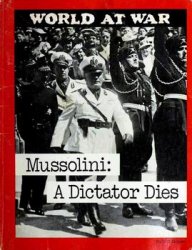A group of 41 Puritan Separatist Congregationalists, known as Pilgrims, were the backbone of the 102 English colonists who sailed to North America on the Mayflower in 1620 and established the Plymouth Colony in New England. Puritans felt the Elizabethan church settlement failed adequately to purge the Anglican Church of its traditional Catholic organization and ceremonies. Instead of venerating pomp and ceremony, the Puritans embraced a fanatical piety embedded in the damnation of original sin, predestination, and salvation by faith. In the late 1500s the Puritans split into two groups, Non-Separatists and Separatists. Non-Separatists wanted to work within the Anglican Church for reform. Separatists, like the Pilgrims, adopted a more zealous doctrine, preaching that the established church was incapable of reformation. They consequently severed their local congregation, located in Scrooby, Nottinghamshire, from the Anglican Church.
The Pilgrims embraced Congregationalism, the idea that congregational independence, decentralized authority, and democratic control by elected leadership offered the best chance for salvation. The Pilgrims’ idea of democracy included only male church elders. On a broader social scale the revolt of Puritan factions against the established church also reflected the 17th-century struggle of an emerging middle class against absolute authority and privilege.
The Anglican Church persecuted Separatist congregations. The Ecclesiastical Commission of York imprisoned Scrooby separatists and fined others. William Brewster, William Bradford, and John Robinson organized an unsuccessful attempt by the Scrooby congregation to leave England in 1607. Local authorities charged and jailed the Separatists for attempting an illegal exit from the country. By 1608 most of the Scrooby congregation arrived in Amsterdam, finally settling in Leiden in 1609.
The Pilgrims never completely adapted to the idea of becoming Dutch instead of remaining English. In 1617 they decided to end their voluntary exile and move to North
America. In 1619 the Pilgrims’ representatives, Deacon John Carver and Robert Cushman, obtained financial support from Thomas Weston and his group of adventurers. The Pilgrims agreed to form a joint-stock company with Weston’s merchant investors. Their seven-year contract required the Pilgrims to establish a trading post in North America and made all property and profit the communal property of the company. The majority of the Leiden congregation rejected this proposal, and only a minority sailed to England to make final arrangements for the voyage to the New World.
After a 66-day voyage across the Atlantic, the Mayflower arrived off Cape Cod on November 11, 1620. The Pilgrims realized they were outside the domain of the original charter. To preserve order and establish control over any non-Congregationalist English “strangers” who might start their own settlement, they persuaded all 41 adult men on board to sign the Mayflower Compact and agree to accept a democratically elected communal government. The Mayflower anchored in Plymouth Bay on December 16, 1620.
Plymouth Colony differed markedly from Jamestown. Unlike Jamestown’s male-dominated company of profit seekers, the Mayflower carried families. Of the 41 Pilgrims on board, there were 17 men, 10 women, and 14 children. The site chosen for Plymouth Colony was the abandoned village of the Patuxet that a plague had decimated in 1617. After an initial brutal winter that killed 44 settlers, the spring of 1621 brought contact with the local Natives. Samoset, the first Indian to come to Plymouth Colony, spoke English he had learned from fishermen. He arranged the visit of Massasoit, chief of the neighboring Wampanoag, who befriended the settlement. Plymouth Colony also found a friend in Tisquantum, or Squanto, the sole survivor of the Patuxet tribe. Squanto showed the colonists how, when, and what to plant in the old Patuxet fields near Plymouth. The Pilgrims also learned where to fish and hunt. In the fall of 1621 the settlement felt established enough to observe the first giving day to offer thanks for their survival after the first winter’s hardships. The colony became official in November 1621, when the Fortune brought 36 new settlers and a charter for Plymouth Plantation from the Council for New England.
Further reading: Crispin Gill, Mayflower Remembered: A History of the Plymouth Pilgrims (Newton Abbot: David & Charles, 1970).
—Tristan Traviolia




 World History
World History









